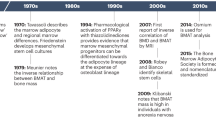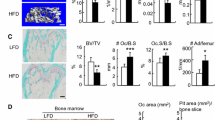Summary
Vitamin D deficiency has pronounced growth retardation effects on the skeletal system. Because the immune system has been implicated in the regulation of bone metabolism, we examined the effect of vitamin D deficiency on the functional development of immune function in a rachitic rat model. Rats deprived of vitamin D3 bothin utero and in postnatal life (−/−) had significantly reduced thymocyte or splenocyte [3H]-thymidine incorporation to mitogens and decreased macrophage chemotaxis when compared with vitamin D3-sufficient rats (+/+). Rats that were deficient in vitamin D3 only duringin utero development (−/+) or during postnatal life (+/−) tended to have [3H]-thymidine incorporation levels that were intermediate to those of the −/− and +/+ group. Similarly, the chemotactic response of macrophages from the +/− and −/+ groups was intermediate to that of the −/− and +/+ group, except at high concentrations of C5a in which there was an overlap with the +/+ group. Interestingly, secretion of soluble mediators, including interleukin 2 by lymphocytes and interleukin 1 and PGE2 by macrophages, was unaffected by vitamin D deficiency. These results suggest that vitamin D3 is essential for the normal development of certain biological responses of lymphocytes and macrophages. Moreover, this rachitic rat model system will enable further evaluation of the role of vitamin D in the functional development of the cells of the immune system and their relationship to skeletal growth.
Similar content being viewed by others
References
Barness LA (1983) Nutrition and nutritional disorders. In: Behrman RE, Vaughn VC, (eds) Nelson textbook in pediatrics, 12th ed. WB Saunders Co. Philadelphia, pp 165–185
Branbe M, Vaccari E (1967) Alterazione dei meccanism immunitari and lattanti affetti di rachitismo ipocalcemico. Min Pediatr 19:377–381
Stroder J, Kasal P (1970) Evaluation of phagocytosis in rickets. Acta Paediat Scand 59:288–292
Lorente F, Fontan G, Jara P, Casas C, Garcia-Rodriguez MC, Ojeda JA (1976) Defective neutrophil motility in hypo-vitaminosis D rickets. Acta Paediat Scand 65:695–699
Stroder J, Franzen CH (1975) Die unspezifische Entzundungsreaktion bei Vitamin-D-Mangel Rachitis. Klim Padiatr 187:461–464
Bar-Shavit Z, Noff D, Edelstein S, Meyer M, Shibolet S, Goldman R (1981) 1,25 Dihydroxyvitamin-D3 and the regulation of macrophage function. Calcif Tissue Int 33:673–676
Bar-Shavit Z, Kahn AJ, Teitelbaum SL (1980) Defective binding of macrophages to bone in rodent osteomalacia and vitamin D deficiency. In vitro evidence for a cellular defect and altered saccharides in the bone matrix. J Clin Invest 72:526–534
Kahn AJ, Malone JO, Teitelbaum SL (1980) Mononuclear phagocytes respond to “bone seeking” hormones and bone matrix constitutents. In: Cohn DV, Talmange RV, Matthews JL (eds) Hormonal control of calcium metabolism. Excerpta Medica, Amsterdam pp 182–187
Abe E, Miyaura C, Sakagami H, Takeda M, Konno K, Tamazaki T, Yoshiki S, Suda T (1981) Differentation of mouse myeloid leukemia cells induced by 1,25 dihydroxyvitamin-D3. Roc Natl Sci 78:4990–4994
Wientroub S, Hagan MP, Reddi AH (1982) Reduction of hematopoietic stem cells and adaptive increase in cell cycle rate in rickets. Am J Physiol 243:C303–306
Wientroub S, Reddi AH (1982) Vitamin D metabolities and endochondral bone development. In: Silberman M, Slavkin HC (eds) Current advances in skeletogenesis, Excerpta Medica, Amsterdam pp 211–217
Chen PS Jr, Toribara TY, Warner H (1956) Microdetermination of phosphorus. Anal Chem 28:1756–1758
Meltzer MS, Oppenheim JJ (1977) Bidirectional amplification of macrophage-lymphocyte interactions: enhanced lymphocyte activation factor production by activated adherent mouse peritoneal cells. J Immunol 118:77–82
Gillis S, Ferm MM, Ou W, Smith KA (1978) T cell growth factor: parameters of production and quantitative microassay for activity. J Immunol 120:2027–2032
Koski IR, Poplack DG, Blaese RM (1976) A nonspecific esterase stain for identification of monocytes and macrophages. In: Bloom BR, David JR (eds) In-vitro methods of cell-mediated and tumor immunity. Academic Press, New York pp 359–362
Wahl SM, Katona IM, Stadler BM, Wilder RL, Helsel WE, Wahl LM (1984) Isolation of human mononuclear cell subsets by counterflow centrifugal elutriation (CCE). II. Functional properties of B-lymphocyte, T-lymphocyte, and monocyte-enriched fractions. Cell Immunol 85:384–395
Wahl LM (1981) Production and quantitation of prostaglandins. In: Herscowitz HB, Holden HT, Bellanti JA Ghaffar A (eds) Manual of macrophage methodology: collection, characterization and function. Marcel Decker Inc, New York, pp 423–429
Nagler A, Ricklis I, Gazit E, Tatarsky I (1986) Differentiation of bone marrow cells from myelodysplastic patients in the presence of 1,25 dihydroxyvitamin D3 or 13-cis retinoic acid. Eur J Clin Invest 16:297–301
Munker R, Norman A, Koeffler HP (1986) Vitamin D compounds. Effect on clonal proliferation and diferentiation of human myeloid cells. J Clin Invest 78:424–430
Bhalla AK, Amento EP, Clemens TL, Holick MF, Krane SM (1983) Specific high-affinity receptors for 1,25-dihydroxyvitamin D3 in human peripheral blood mononuclear cells: presence in monocytes and induction in T lymphocytes following activation. J Clin Endocrinol Metab 57:1308–1310
Provvedini DM, Tsoukas CD, Deftos LJ, Manolagas SC (1983) 1,25-Dihydroxyvitamin D3 receptors in human leukocytes. Science 221:1181–1183
Rigby WFC, Stacy T, Fanger MW (1984) Inhibition of T lymphocyte mitogenesis by 1,25-dihydroxyvitamin D3 (calcitriol). J Clin Invest 74:1451–1455
Tsoukas CD, Provvedini DM, Manolagas SC (1984) 1,25-Dihydroxyvitamin D3. A novel immunoregulator hormone. Science 224:1438–1440
Author information
Authors and Affiliations
Rights and permissions
About this article
Cite this article
Wientroub, S., Winter, C.C., Wahl, S.M. et al. Effect of Vitamin D deficiency on macrophage and lymphocyte function in the rat. Calcif Tissue Int 44, 125–130 (1989). https://doi.org/10.1007/BF02556471
Received:
Revised:
Issue Date:
DOI: https://doi.org/10.1007/BF02556471




